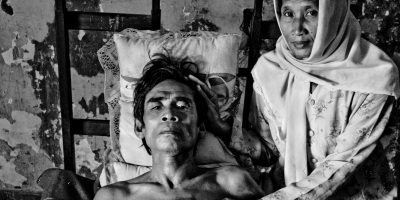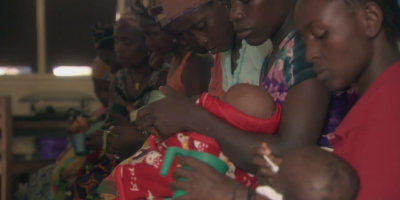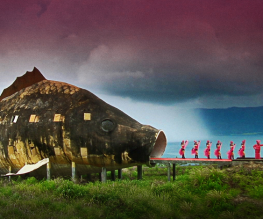Pine Ridge
Pine Ridge follows a group of young Native American Oglala Sioux living on the eponymous South Dakota reservation, collecting their stories as they bum around gas stations and reservoirs during a hot and stormy summer. One of the most impoverished areas in the United States, Pine Ridge is both monument to a Native American past riddled with governmental injustice and home to a generation of young men and women whose cultural identity is slipping further and further away. With an emergent gang culture and prospective adulthood defined by alcoholism and drug addiction, Anna Eborn’s film captures a handful of stories from the cusp of maturity, and quietly paints a picture of a deeply-rooted culture, its diminishing presence and uncertain future.
Slyly aware of the pitfalls concerning Native American representation on film, Pine Ridge opens with an impassioned, somewhat snotty and fully teenaged diatribe that ought to dispel some of the assumptions pinned on Native American culture. “People think we still live in fucking tipis, man”, complains Lance Red Cloud, his night spent loitering outside a gas station. Approaching numerous people, he’s trying to hock a four-man tent for gas money that might get him away from the reservation. It’s a bitterly amusing and sad scene, and gets to the core of Eborn’s film early on. By following and listening instead of probing or investigating, Pine Ridge is less an explorative report than it is a portrait of modern Native American youth. The weight of history is left to swirl around the edges of the frame, flaring as it echoes offhand sentiments or underpins verbal exchanges.
It’s a visually stunning film, all big skies and badlands, beautifully shot and overlaid with testimonies of life on the reservation. Hopes, fears and dreams are brushed thickly across twilit landscapes, recalling Terrence Malick and David Gordon-Green’s breathy voice-overs. In the context of Pine Ridge’s unending social problems, Eborn could easily be accused of poeticizing poverty with such a well-worn technique. However, she is deft enough to establish a tone that acknowledges not just their longing for some intangible elsewhere, but the unmistakable vitality of youth that still burns, even in a place that fosters little else in its people but the desire to escape.
The subject and aesthetic of Pine Ridge place it alongside recent documentaries that prize the recreation of feeling above dustier concerns of fact-listing and date-marking. Fringe societies and subcultures are left open to the kind of lyrical interpretation that larger events and subjects often resist. Films such as Bombay Beach (2011) and 12 O’Clock Boys (2013) provide a kind of poetic justice for their subjects, and Pine Ridge follows the mould. The greatest concern is a fear that the severity underlying Eborn’s young guides–endemic poverty, ghettoization, gang culture, loss of identity- might be subsumed by a willingness to take the poetic route, to mine silent gazes for a sadness better related by the tangible realities of Pine Ridge’s alarmingly high suicide rate and low age expectancy. Such concerns are allayed, however, as Eborn proves to be alert to the problems facing Pine Ridge throughout, as well as sensitive to the transitional space the young Oglala occupy, between youth and adulthood, their receding traditional culture and unknown future. Some of the more overt poeticism might raise a few eyebrows, but as Pine Ridge sometimes beautifully demonstrates, when used with tact and humanity, it can relate a person’s truth with a force as intimate and direct as a close-up interview.
Pine Ridge is screening at London’s ICA on July 31st, followed by a Q&A Skype session with director Anna Eborn.






Recent Comments